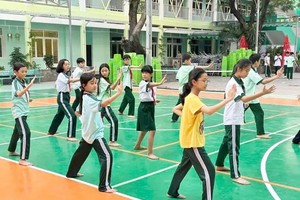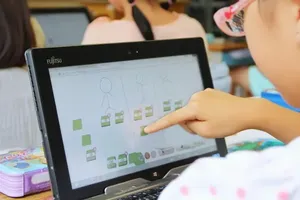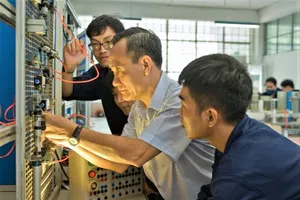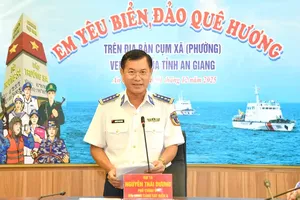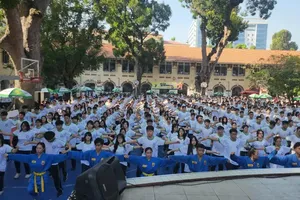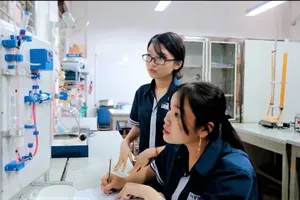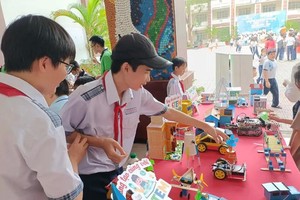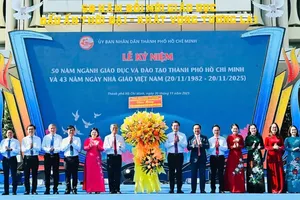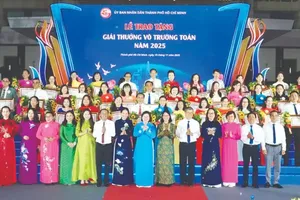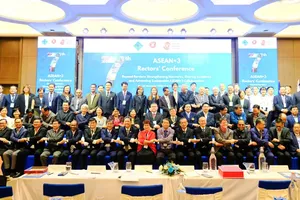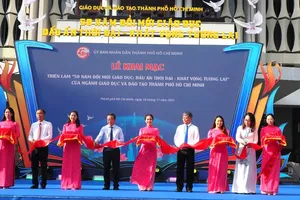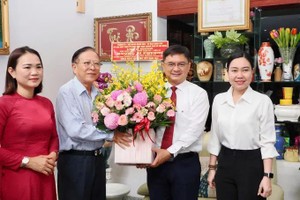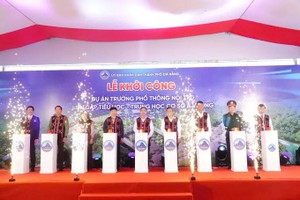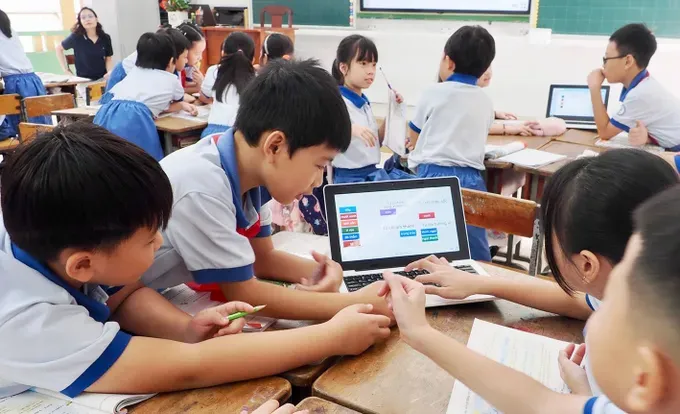
Cautious, step-by-step approach
A social-emotional skills class for preschoolers on the theme of “Naming Emotions” kicks off with a group song. The class, run by Dam Thi Thu, a teacher at Hoa Mi 2 Preschool (sited in Cho Lon Ward, HCMC), then transitions. The kids watch a short film about a conversation between two friends, one reportedly generated using AI.
After the film, Ms. Thu hands out flashcards showing faces with different emotions – happy, sad, angry – and guides the children on how to recognize these expressions. To cap off the lesson, each student uses an iPad to scan a QR code, joining an interactive game under the teacher’s supervision.
For Ms. Thu, the benefits are clear. “When I use AI, the lesson becomes more visual with eye-catching images and lively sounds,” she explains. This, she says, makes the classroom atmosphere more energetic, the kids are more engaged, and they absorb the knowledge better. She is, however, quick to add a note of caution. At the preschool level, student health and nutrition are a much larger focus than in other grades, so the application of IT needs to be calculated appropriately.
Health experts recommend that children aged 2-5 shouldn’t use electronic devices for more than one hour per day. This means teachers are tasked with striking a careful balance between technology and physical activity, and between screen-based interaction and direct, face-to-face interaction, all to help the children develop holistically.
Teacher Nguyen Ho Bao Chau from Vang Anh Preschool in Cho Quan Ward of HCMC argues that if this early exposure is “well-controlled,” it will build a solid foundation of tech skills for higher education. For example, she says, 3- to 4-year-olds are introduced to simple operations like turning devices on and off or dragging and dropping a mouse on a screen.
Older children are guided through more complex actions, like scanning QR codes, clicking on lesson links, or selecting answers on a computer screen to respond to the teacher. She also stresses that families and schools need to coordinate and exchange information constantly about the amount of time spent, and the types of age-appropriate content, that children are accessing on devices at home.
Developing in spiral
According to teacher Tran Quoc Long Xuyen from Tran Hung Dao Primary School in Cau Ong Lanh Ward in HCMC, AI offers a ton of practical applications for teaching. “You can use it to make films, design games, build question banks, draw knowledge maps, record student results... you name it,” he lists. A lesson plan that uses AI is far livelier and more intuitive than the traditional tools of blackboard and chalk.
Thanks to this, he says, the knowledge transferred in the lesson is more effective. But, he cautions, to ensure AI isn’t overused, teachers must start from the objective of each lesson, combining multiple forms and methods of teaching to achieve the best possible outcome for the students.
He also reports that the general education curriculum is now designed “in a spiral.” This means that knowledge and skills are introduced broadly at the basic level, and as students advance to higher grades, the content becomes more specialized.
This same logic applies to AI, introduced at levels appropriate to their cognitive ability. In primary school, it’s embedded in games and visuals; later, students use AI to create their own products. Mr. Xuyen argues the key issue isn’t what age is appropriate, but the level and content of access. He stresses that teachers must be “flexible” to adapt their approach for each student’s different abilities.
Virtual assistants in learning, research
At the university level, the stakes are different. According to Prof Dr Tran Linh Thuoc, a lecturer at the University of Science (Vietnam National University-HCMC), universities need to develop strategic technology by building interdisciplinary research groups, finding new applications for existing tech, and forging close links with businesses and state management agencies, from basic research all the way to commercialization.
Taking a different angle, Assoc Prof Dr Dam Sao Mai, Vice President of HCMC University of Industry (IUH) offers a striking observation: “AI is currently acting as the architect for experiential and in-depth practical activities at universities.”
The philosophy “learning goes hand-in-hand with practice” is now fully realized through Digital Twin technology and AI-based virtual laboratories. Cooperating with businesses, universities create “virtual factories” for engineering, “virtual smart farms” for agriculture, and “live-fire exercises” for cybersecurity. This collaborative model will significantly shorten the gap between theory and practice,” giving students real work experience while still in school.
Wide open opportunities for investment cooperation
Many universities and corporations have quickly jumped into collaborative programs to develop and apply AI, aiming for both short-term benefits and long-term strategic gains.
HCMC University of Technology (VNU-HCM) and VNPT Group recently signed a strategic partnership to boost R&D in core technologies. Prof Dr Mai Thanh Phong, the university’s President, said this partnership aims to implement two major Politburo resolutions on science-technology (S&T) and education. The focus, he stated, is on researching and applying new technologies, especially core technologies in AI, semiconductors, and chips. This university-enterprise link also gives students access to real-world work environments through internships.
The IT Faculty of HCMC University of Science (VNU-HCM) inaugurated two labs (Information Security, Intelligent Systems) backed by a VND70 billion (US$2.75 million) investment. Nearly 60 percent of this was earmarked for an NVIDIA DGX Station, the first supercomputer in the VNU-HCM system. This high-performance platform will serve advanced AI/ML research, helping the faculty pioneer and transfer new technology.
Key investment for four universities to enter Asia’s top ranks
According to a concluding report from the Central Steering Committee for S&T, Innovation, and Digital Transformation, four universities, namely VNU-Hanoi, VNU-HCM, Da Nang University, and Hanoi University of Science and Technology, will receive focused key investment from now until 2030. The goal is to push them into the top 150 leading universities in Asia and to have at least one of their fields rank in the global top-100, according to prestigious ranking systems.
It's reported these four universities will be model investment projects with specific targets of attracting $50 million annually for R&D; and each creating 50 innovative startups and S&T enterprises per year, with at least 10 of those becoming successful startups valued at $200 million or more.
By November 2025, these four key universities are expected to roll out concrete action plans to achieve these ranking goals, including urgently proposing investment projects for S&T infrastructure focused on strategic technology sectors.


